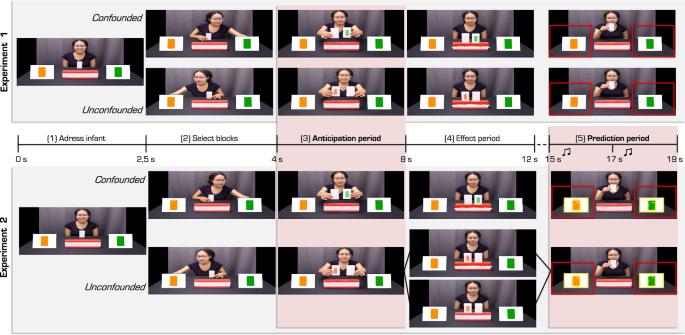Infants evaluate informativeness of evidence and predict causal events as revealed in theta oscillations and predictive looking
引用次数: 0
Abstract
This study investigates 16-month-old infants’ sensitivity to the informativeness of evidence and its potential link to infants’ ability to draw accurate causal inferences and predict unfolding events. Employing concurrent EEG and eye tracking, data from 66 infants revealed significantly increased theta oscillatory activity when infants expected to see causally unconfounded evidence compared to confounded evidence, suggesting heightened cognitive engagement in anticipation of informative evidence. Crucially, this difference was more pronounced in the subset of infants who later made correct predictions, suggesting that they had correctly inferred the causal structure based on the evidence presented. This research sheds light on infants’ motivation to seek explanatory causal information, suggesting that even at 16 months, infants can strategically direct attention to situations conducive to acquiring informative evidence, potentially laying the groundwork for the impressive abilities of humans to rapidly acquire knowledge and develop causal theories of the world. 16-month-old infants showed heightened theta oscillations for informative versus uninformative causal evidence. This relationship was more pronounced in infants who subsequently made correct predictions based on this information.

婴儿通过θ 振荡和预测性观察来评估证据的信息量并预测因果事件
本研究调查了 16 个月大婴儿对证据信息性的敏感性及其与婴儿做出准确因果推断和预测事件发展能力的潜在联系。通过同时使用脑电图和眼动追踪,66 名婴儿的数据显示,当婴儿预期看到无因果关系的证据时,θ 振荡活动比预期看到有因果关系的证据时显著增加,这表明婴儿在预期信息性证据时的认知参与程度有所提高。最重要的是,这种差异在后来做出正确预测的婴儿中更为明显,这表明他们根据所呈现的证据正确推断出了因果结构。这项研究揭示了婴儿寻求解释性因果信息的动机,表明即使是16个月大的婴儿也能有策略地将注意力引向有利于获取信息证据的情境,这可能为人类快速获取知识和发展世界因果理论的惊人能力奠定了基础。16 个月大的婴儿对有信息的因果证据和无信息的因果证据表现出更强的θ振荡。这种关系在随后根据这些信息做出正确预测的婴儿身上更为明显。
本文章由计算机程序翻译,如有差异,请以英文原文为准。
求助全文
约1分钟内获得全文
求助全文

 求助内容:
求助内容: 应助结果提醒方式:
应助结果提醒方式:


